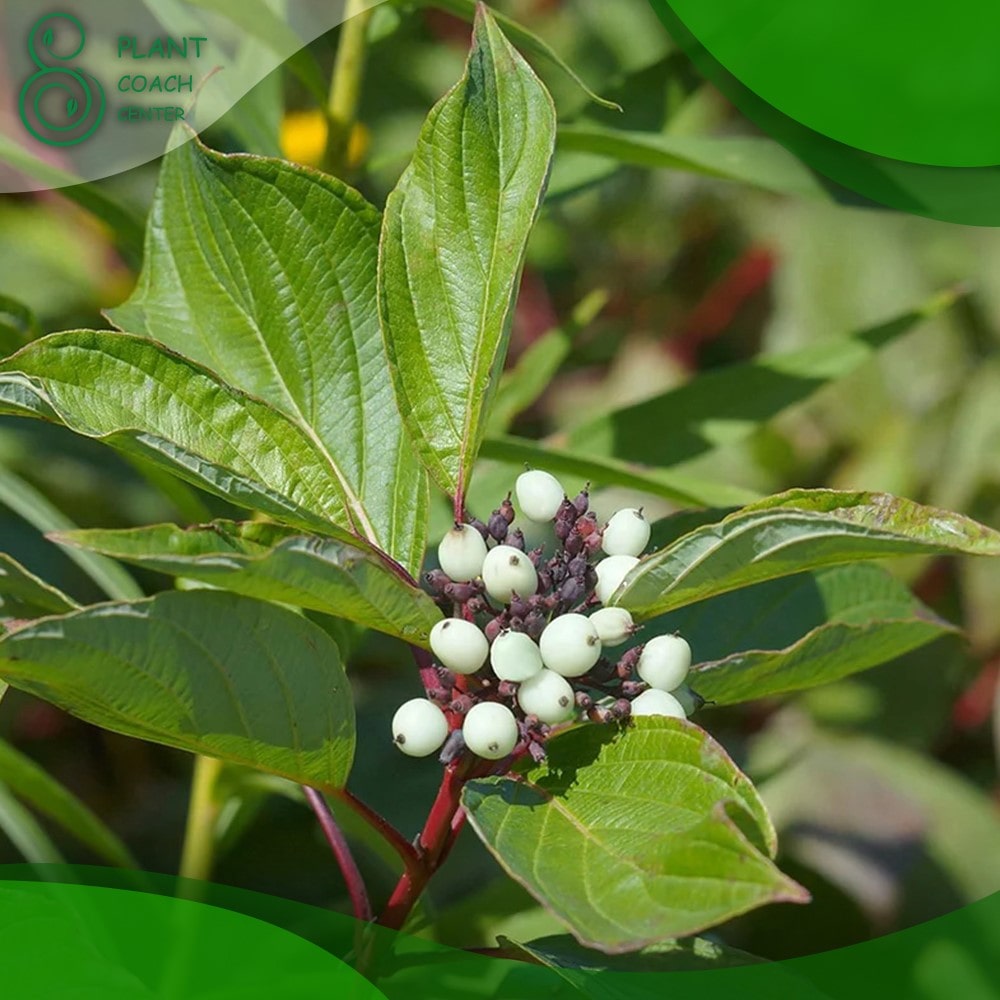Introduction to When to Prune Dogwood Shrub
Welcome to the world of dogwood shrub care, where precision in pruning is the name of the game. In plantcoachcenter.com , we’re going to shed light on the critical element of timing when it comes to these beauties. Dogwood shrubs, with their charming foliage and blossoms, can truly steal the show in any garden, but only if you prune them at the right moments.
Timing isn’t just a suggestion; it’s a crucial factor in nurturing the health and vibrancy of your dogwood shrubs. After all, we all want our gardens to look their best, and that’s where the magic of pruning comes into play. So, let’s dig in. The main purpose of this article is to be your compass, guiding you through the seasons and helping you understand precisely when to prune your dogwood shrubs for optimal results. Ready to embark on this green journey? Let’s get started.
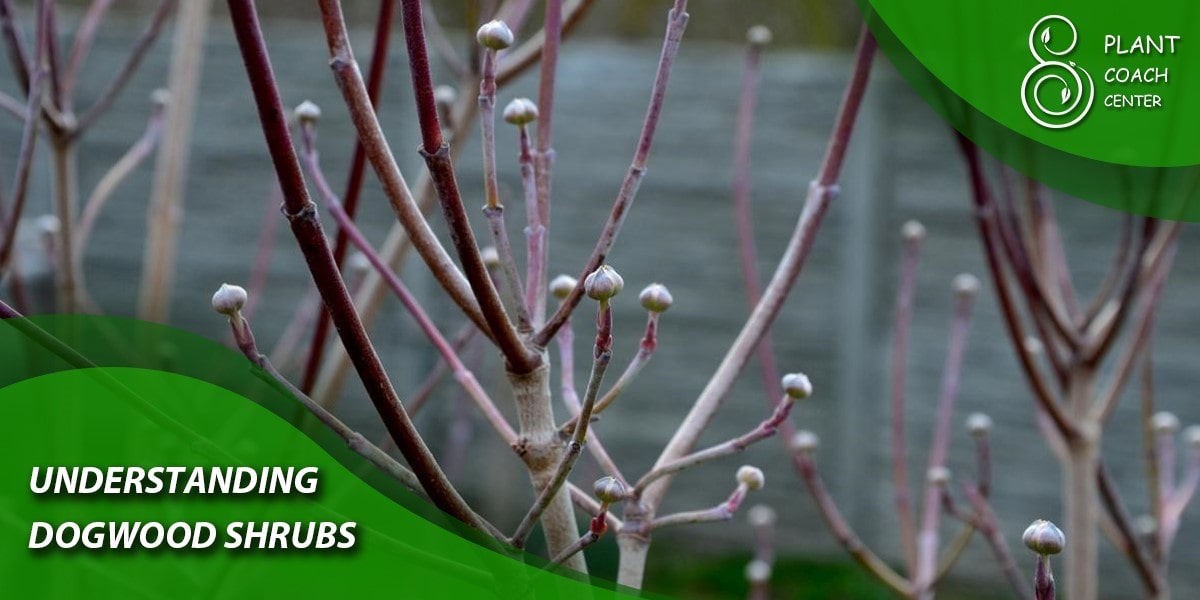
Understanding Dogwood Shrubs
Dogwood shrubs, scientifically known as Cornus, are a captivating addition to any garden landscape. These woody ornamentals are celebrated for their graceful charm, with distinct features that set them apart from the garden crowd.
Characteristics:
Foliage: Dogwood shrubs boast opposite, simple leaves that come in a variety of shapes and sizes. They can range from oval to lance-shaped, with some species offering stunning variegated leaves that add a pop of color to your garden.
Blossoms: While often overshadowed by their showier cousin, the dogwood tree, these shrubs can produce lovely clusters of small, inconspicuous flowers. These blossoms are usually greenish-yellow but can also appear in shades of white or pink, depending on the species.
Berries: After flowering, dogwood shrubs develop clusters of vibrant, berry-like fruit, commonly known as drupes. These berries evolve in hues of red, white, or blue, creating eye-catching displays that persist into the fall and early winter.
Bark: In the winter, the shrubs’ colorful bark takes center stage. Dogwood shrubs are renowned for their strikingly red or yellow stems, which intensify as the temperature drops. This feature provides much-needed visual interest in the colder months.
Reasons for Pruning:
Promoting New Growth: Pruning is like a rejuvenating spa day for your dogwood shrubs. By selectively trimming branches, you encourage the development of new shoots. These fresh shoots not only contribute to a fuller, more vibrant appearance but also ensure the shrub remains healthy and vigorous.
Removing Deadwood: Over time, dogwood shrubs can accumulate dead or diseased branches. Pruning helps you identify and remove these problem areas, preventing potential issues from spreading to healthy parts of the shrub.
Enhancing Appearance: A well-pruned dogwood shrub is a sight to behold. By carefully shaping and thinning the shrub, you can accentuate its natural beauty, highlighting its unique foliage, blossoms, and colorful bark. This enhances its overall aesthetic appeal and ensures it remains a standout feature in your garden
Understanding these characteristics and reasons for pruning is the first step towards nurturing your dogwood shrubs. Now, let’s delve deeper into the art of timing your pruning endeavors to maximize their impact on your beloved shrubs.
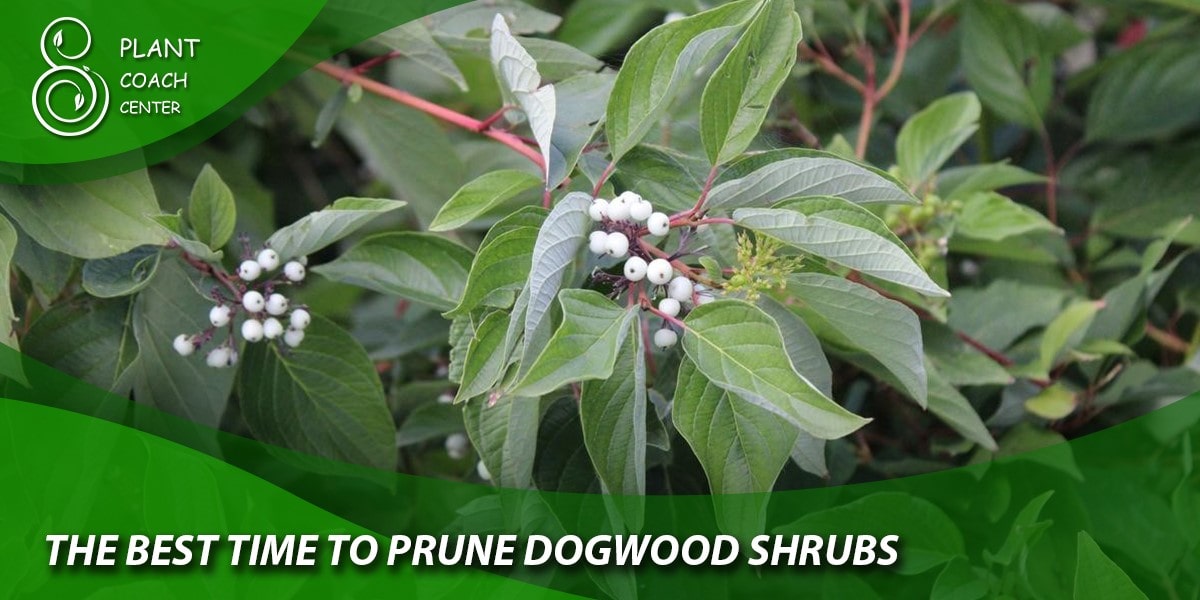
The Best Time to Prune Dogwood Shrubs
When it comes to pruning your dogwood shrubs, timing is everything. Different seasons offer unique advantages for the health and vitality of these ornamental beauties. Let’s explore the best times to prune in detail.
Spring Pruning
Why Spring?
Spring is a splendid choice for pruning dogwood shrubs for several reasons. As the weather begins to warm and the days lengthen, the shrubs stir from their winter slumber. This period of renewed growth and activity is the perfect time to intervene.
Timing in Spring:
Ideally, you should aim for late winter to early spring, just before new growth buds start to appear. It’s a window of opportunity when the shrub is still dormant but about to burst into life.
Step-by-Step Spring Pruning:
Inspect the Shrubs: Start by carefully examining the shrubs for signs of winter damage, dead branches, or any areas that seem crowded or overgrown.
Prepare Your Tools: Ensure your pruning shears or loppers are sharp and clean. Clean cuts promote quicker healing.
Selective Pruning: Begin by removing dead or damaged branches at their base. Cut them just above a healthy bud or lateral branch. Make your cuts at a slight angle to facilitate water runoff.
Thinning the Canopy: To encourage air circulation and light penetration, thin out crowded areas within the shrub by selectively removing a few older branches. This helps prevent disease and encourages new growth.
Shaping and Size Control: If necessary, shape your dogwood shrub to your desired form, but avoid over-pruning, which can lead to stress.
Benefits of Spring Pruning:
Spring pruning kick-starts a wave of new growth. It allows your dogwood shrubs to channel their energy into budding, resulting in a fuller, more vibrant appearance come summer. Plus, by removing damaged or diseased branches after the harsh winter, you’re ensuring your shrub’s overall health.

Late Winter Pruning
Advantages of Late Winter Pruning:
Late winter, while seemingly unconventional, has its merits. Pruning during this season helps prepare your dogwood shrubs for the impending spring burst.
Timing in Late Winter:
Late winter pruning should be performed when the shrub is still dormant, ideally in late February to early March, before the last frost.
Guide to Late Winter Pruning:
Identify Deadwood: Start by identifying and removing dead or diseased branches. These can sap energy from the shrub and hinder new growth.
Thinning and Shaping: As with spring pruning, thin out overcrowded areas and shape your shrub as needed. This will encourage even growth and improve the shrub’s appearance.
Benefits of Late Winter Pruning:
Late winter pruning removes potential obstacles to new growth and ensures your dogwood shrub is ready to thrive as soon as spring arrives. It’s a proactive approach to nurturing healthy, flourishing shrubs.
Dormant Season Pruning
Why the Dormant Season?
The dormant season, typically late fall to early winter, offers a quieter but valuable opportunity for pruning.
Avoiding Extreme Cold:
It’s crucial to perform dormant season pruning when temperatures are above freezing but before the shrub breaks dormancy in spring. Extreme cold spells can damage exposed cuts.
Tips for Dormant Season Pruning:
Trim Gently: During this season, focus on light maintenance rather than heavy pruning. Remove any weak or diseased branches, but avoid extensive cutting.
Inspect for Pests: Use this time to inspect your shrubs for any signs of pest infestations, which can be easier to spot when the shrub is leafless.
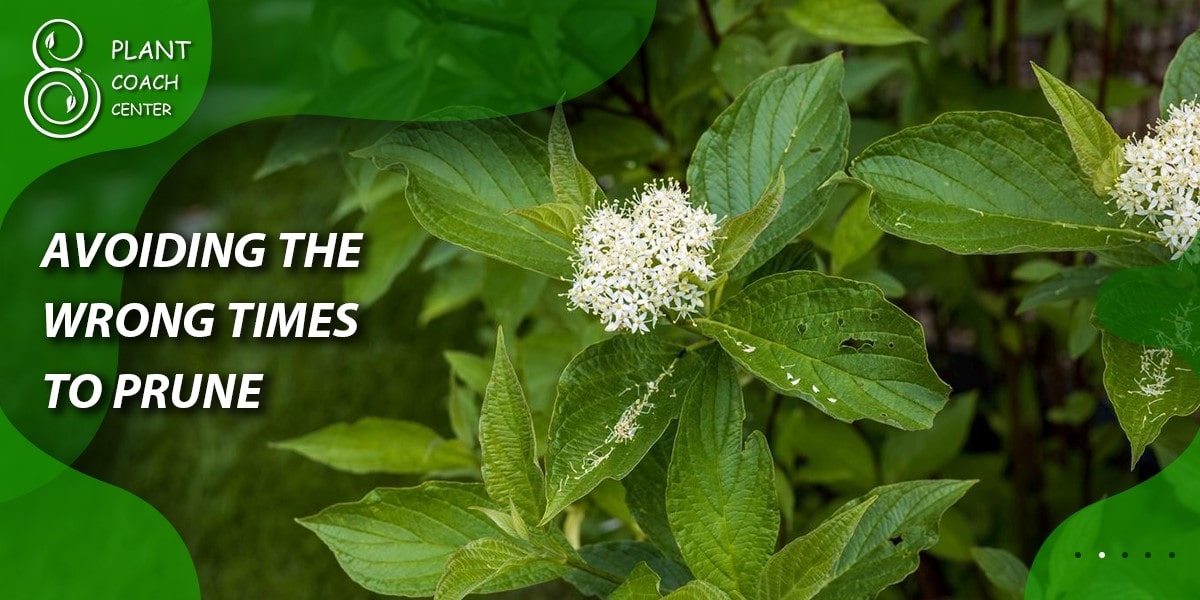
Contributions to Overall Health:
Dormant season pruning may not result in immediate growth stimulation, but it aids in maintaining a well-balanced shrub. By addressing minor issues during this period, you ensure that your dogwood remains robust throughout the year.
Understanding the nuances of each pruning season empowers you to make informed decisions for the well-being of your dogwood shrubs. Whether it’s the rejuvenation of spring, the readiness of late winter, or the gentle care of the dormant season, your shrubs will thrive with your seasonal attention.
Avoiding the Wrong Times to Prune
Pruning is a powerful tool in your gardening arsenal, but it’s equally important to know when to holster those shears. Let’s delve into the times when pruning should be firmly off the table and why it’s crucial to heed this advice.
Times to Avoid Pruning:
Late Spring and Early Summer: Once your dogwood shrub has sprung into full bloom, typically in late spring or early summer, it’s time to put those pruning shears away. Pruning at this stage can lead to a significant drawback – you risk cutting off next year’s flower buds. Your shrub has invested considerable energy into those blossoms, and it would be a shame to interrupt the show.
During Extreme Weather: Avoid pruning during extreme weather conditions, be it sweltering heat or bone-chilling cold. Extreme temperatures can stress your shrub, making it more susceptible to damage. It’s best to wait for milder conditions when the shrub can recover more easily from the pruning process.
Potential Consequences of Pruning at the Wrong Time:
Reduced Flowering: Pruning at the wrong time, especially during late spring or early summer, can lead to a disappointing reduction in flowering. You’re essentially snipping away the potential for next year’s blooms. Your dogwood shrub needs time to develop those flower buds, and untimely pruning disrupts this natural process.
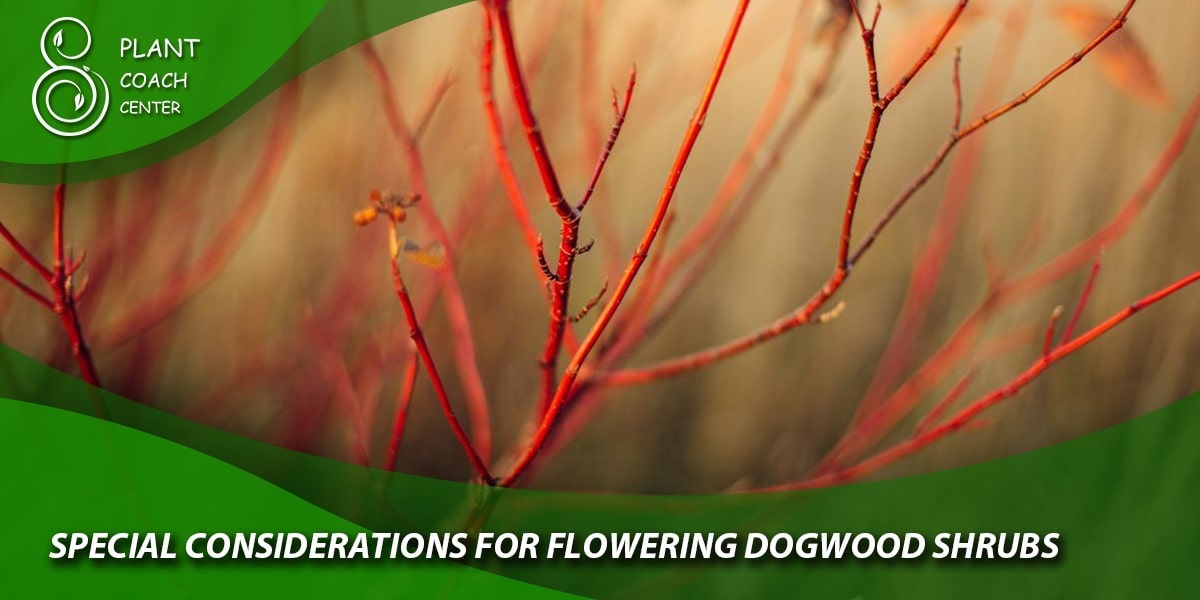
Stress on the Shrub: Pruning during extreme weather conditions can stress your shrub. In hot weather, it can result in excessive moisture loss, while in freezing temperatures, it can lead to cold-induced damage. Stressed shrubs are more vulnerable to diseases and pests, and their overall health can suffer.
Interrupted Growth: Pruning at the wrong time can interrupt the shrub’s growth cycle. Timing is essential to allow the shrub to channel its energy effectively. Untimely pruning can disrupt the shrub’s rhythm and hinder its overall development.
By avoiding pruning during late spring and early summer and steering clear of extreme weather conditions, you’ll ensure that your dogwood shrub continues to thrive without interruption. Pruning, when done right, is an art that respects the natural rhythms of your garden, allowing it to flourish as intended.
Special Considerations for Flowering Dogwood Shrubs
Flowering dogwood shrubs bring a unique charm to your garden, and to ensure they blossom to their full potential, it’s crucial to recognize that they have their own set of pruning needs. Let’s delve into these special considerations, so you can nurture their beauty while keeping them healthy.
Variety-Specific Pruning Needs:
Different dogwood varieties may have distinct growth habits and flowering patterns. Before you begin pruning, it’s essential to identify your specific dogwood species. Common types include the Red Twig, Yellow Twig, and Silky Dogwood, each with its unique characteristics. Research your variety to understand its growth habits and flowering times, as this knowledge will inform your pruning approach.
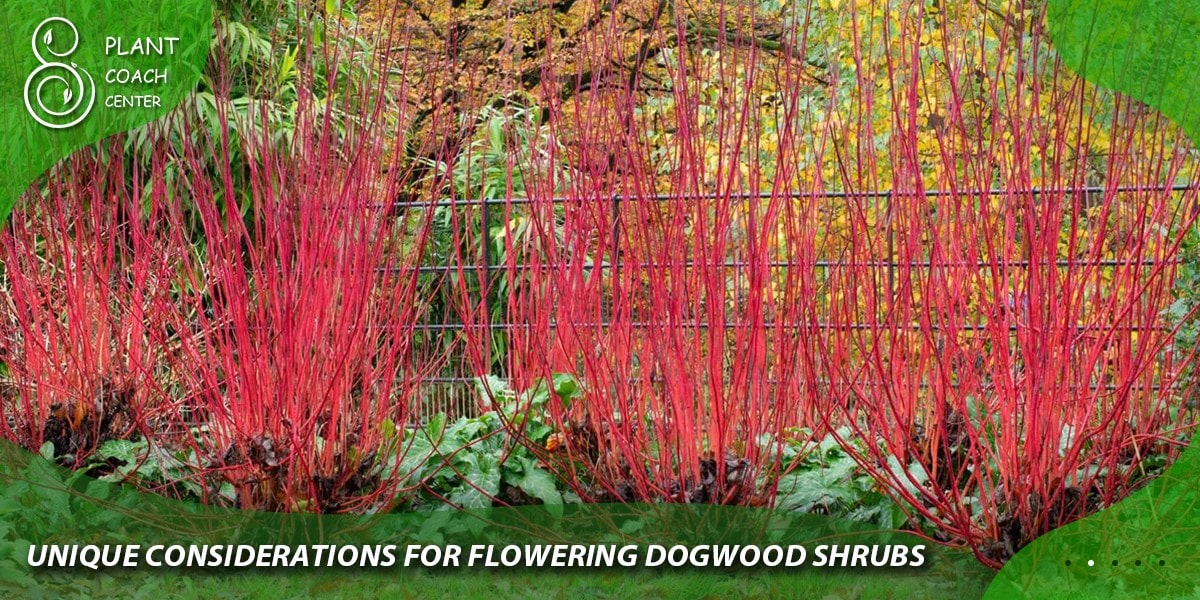
Unique Considerations for Flowering Dogwood Shrubs:
Pruning Timing: Flowering dogwoods typically bloom in the spring, producing their spectacular blossoms on the previous year’s growth. To maintain their flowering potential, it’s best to prune them immediately after they finish blooming. This timing allows you to remove any dead or spent flowers without risking damage to next year’s budding potential.
Selective Pruning: When it comes to flowering dogwood shrubs, less is often more. Instead of heavy pruning, focus on selective removal of dead or diseased branches, as well as any crossing or crowded growth. These adjustments open up the shrub’s canopy, allowing more light and air circulation, which can enhance flower production.
Protecting Flower Buds: Flowering dogwoods set their flower buds during the summer and fall for the next spring’s display. To preserve these budding beauties, avoid pruning during this critical period. Pruning during the budding season can inadvertently remove potential flowers, leading to a less impressive spring show.
Avoiding Over-Pruning: Over-pruning can stress flowering dogwoods and diminish their overall health. These shrubs thrive when their natural form is maintained. It’s important not to get carried away with the pruning shears and to respect the shrub’s shape and size.
Preserving Flowering Potential While Maintaining Health:
To strike the delicate balance between preserving flowering potential and maintaining your flowering dogwood shrub’s health, follow these steps:
Post-Bloom Pruning: As soon as the flowering display concludes, carefully inspect the shrub for spent flowers and any signs of disease or dead branches. Remove these selectively, ensuring you don’t disturb the budding potential for the next season.
Minimal Intervention: During the growing season, limit your pruning efforts to addressing immediate issues like disease or overgrowth. The goal is to maintain the shrub’s natural form while minimizing disruption to budding.
Regular Monitoring: Keep a watchful eye on your flowering dogwood shrub throughout the year. Early detection of problems allows for timely intervention without jeopardizing its flowering capacity.
Understanding the uniqueness of flowering dogwood shrubs and their specific pruning needs empowers you to enjoy their blossoms to the fullest while nurturing their overall health. By following these considerations, you’ll create a harmonious balance between vibrant spring displays and a thriving shrub all year round.
a row of shrubs with red branches of dogwood
Conclusion
In conclusion, the timing of pruning for dogwood shrubs plays a pivotal role in their overall health and appearance. Understanding when to prune, whether it’s during the spring to stimulate new growth and remove winter damage, late winter to prepare for the upcoming season, or the dormant season for light maintenance, ensures that your shrubs thrive.
Avoiding the wrong times, such as late spring or extreme weather conditions, prevents potential setbacks like reduced flowering and stress on the shrub. Special considerations are essential for flowering dogwood shrubs, with post-bloom pruning and minimal intervention being key. By applying this knowledge, you have the tools to care for your dogwood shrubs effectively, nurturing their vitality while preserving their natural beauty. Happy gardening!
FAQs
When is the best time to prune dogwood shrubs?
Late winter, early spring, or during the dormant season.
Can I prune dogwood shrubs in late summer?
Best to avoid; it can disrupt flowering.
What are the benefits of spring pruning for dogwood shrubs?
Stimulates growth, removes damage, enhances appearance.
How do I preserve flowering potential in flowering dogwood shrubs?
Prune after blooming, selectively and minimally.
Can I prune during extreme weather?
Avoid; it can stress the shrub. Wait for milder conditions.
What if my dogwood shrub has specific variety characteristics?
Tailor pruning based on variety traits.


